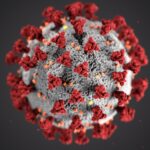
The concern about dental practice SARS-CoV-2 transmission is widely recognised around the world. The New York Times published that dentistry was the most at-risk profession for the virus compared to various other occupations. Based on the nature of dental procedures and the proximity of the dental team with patients, there is the risk of occupational virus if the appropriate protective infection control measurements are not undertaken. Each country around the world has developed policies to counter the spread of COVID-19 however there is much variation in the global guidelines for dentistry (Dental Elf – 14th May 2020).
This systematic review focuses on the risk of transmission of COVID-19 during dental treatment and provides pathways and protective protocols to minimise this.
Methods
This systematic review involved searching electronic databases using MESH terms and additional keywords. The following databases were searched; Pubmed, ISI and SCOPUS from 1st January 2020 to 10th May 2020. All articles needed to be recommendations or guidelines for dental practices during the COVID-19 pandemic. Articles were excluded if they were not relevant, produced before the COVID-19 pandemic or opinion-based without evidence. Additionally, the authors undertook a Google search for sources from The World Health Organisation, The Centers for Disease Control and Prevention, The National Health Service, The American Dental Association and American Dental Hygienists’ Association.
Results
- 38 articles were initially identified by the database searches, following removal of duplicates and implementation of inclusion and exclusion criteria, 9 studies were included in this review.
- All 9 studies proposed in a general consensus that any elective, non-emergency, dental care should be postponed for at least 2 weeks for patients with suspected or known COVID-19.
- The authors reported that only urgent treatment of dental disease should be performed during the COVID-19 outbreak undertaking pharmacological management as the first line and contagion-reduced minimally invasive treatment as the secondary and final management.
- According to the recommended guidelines, the protective measures that should be undertaken in a dental setting can be categorised into three phases.
- 1 – Prior to dental treatment. This included patient triage, identification of possible suspects and delay of non-urgent dental care, active screening of dental staff and management of dental appointments. In the dental office, social distancing, sanitation measures, facemasks, education, PPE and management of the dental operatory room are amongst the procedures to be carried out.
- 2 – During dental treatment. Maintaining hand hygiene, offering a pre-operative antimicrobial mouth rinse to patients, using rubber dams, high volume saliva ejectors, extra-oral dental radiographs, 4-handed dentistry, avoiding aerosol generating procedures, one-visit treatment and environmental cleaning and disinfection should be implemented.
- 3 – Post dental treatment. This includes cleaning and disinfecting reusable facial protective equipment and management of laundry and medical waste.
- Regarding the risk of transmission of COVID-19 in dentistry, dental procedures which lead to the spray of saliva particles into the air could heighten the possibility of contamination. The authors acknowledge that the majority of dental instruments are made from mental and polymers, therefore the virus could adhere and persist on these surfaces for several days if not adequately decontaminated.
- The authors extracted additional special precautions required in dental procedures. The American Dental Association and The Centers for Disease Control and Prevention recommend peroxide mouthrinse for patients however public health authorities advise for 0.2% chlorhexidine mouth wash, 1% povidone-iodine, 1.5% hydrogen peroxide or 0.05% hypochlorous acid. The importance of adequate personal protective equipment for the dental team is also emphasised.
Conclusions
The authors concluded:-
…While the currently available evidence has not demonstrated a clear and direct relationship between dental treatment or surgery and the possibility of COVID-19, there is clearly the potential for transmission.
Commentary
This systematic review has several limitations including the limited database searches, lack of conformity to The Preferred Reporting Items for Systematic Review and Meta-Analyses (PRISMA) and amalgamation of guidelines and primary research studies into the review. Guidelines were limited to candidate countries which are subject to local influence from public health and policy makers. Therefore, such guidelines can change based on the local population requirements and measures implemented for COVID-19. Subsequently, there are limited conclusions which can be drawn from this systematic review. Similar rapid reviews have been published by Cochrane Oral Health on the re-opening of dental services and aerosol generating procedures and their mitigation based on a review of international guidance documents (Clarkson et al 2020 and Clarkson et al 2020). There is rapidly emerging evidence evolving our understanding of both the disease and its management, therefore the most up to date research should be used to inform clinical practice.
Links
Primary paper
Banakar, M., Bagheri Lankarani, K., Jafarpour, D. et al. COVID-19 transmission risk and protective protocols in dentistry: a systematic review. BMC Oral Health 20, 275 (2020). https://doi.org/10.1186/s12903-020-01270-9
Other references
Clarkson J, Ramsay C, Richards D, Robertson C, & Aceves-Martins M; on behalf of the CoDER Working Group (2020). Aerosol Generating Procedures and their Mitigation in International Dental Guidance Documents – A Rapid Review.
Clarkson et al (2020). Recommendations for re-opening dental services: a rapid review of international resources.
Dental Elf – 14th May 2020
Re-opening of dental services: A rapid review of international sources
Photo Credits
